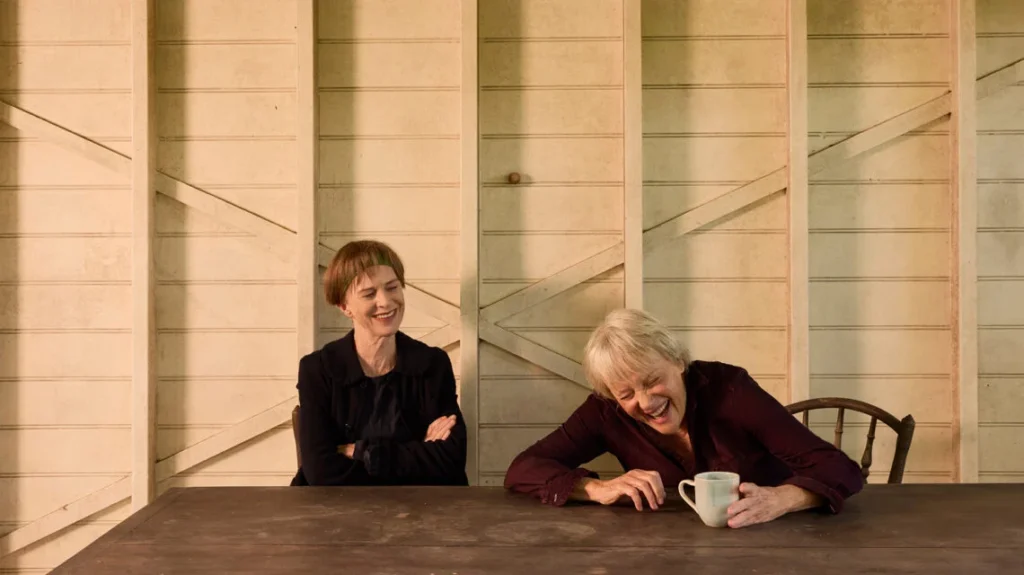
Following a blazing start to Belvoir 25a’s 2025 season, Awarded Runner Up in the Australian Theatre Festival NYC 2024 New Play Award, SNAKEFACE is set to explore the myth of Medusa in the modern day
At age 23, Snakeface is cursed by her ex to live her life as a monster. Reclaiming the violence forced upon her, she rampages through the queer clubs and art studios of Sydney. She has a lifetime of silenced words and stolen power to unleash.
Inspired by the myth of Medusa, SNAKEFACE explores the tight loop of creation and destruction. Rejected and tested, Snakeface claws at her relationship with sex, sculpture, romance, and rage in a body that has never been afforded safety.
Theatre Thoughts heard from director and dramaturg Bernadette Fam on the Belvoir premiere of this contemporary look at one of Greek Mythology’s most misunderstood demigods.
Read the full Q&A below, then book your tickets here.

TT: The myth of Medusa is a powerful symbol of female rage and reclaiming autonomy. How did you approach translating those themes into a contemporary, queer, and Black Australian context?
Fam: Medusa’s origins lie in North Africa, Libya specifically. Medusa is also a survivor of sexual violence. She is a character whose rage is her dearest friend when snatching back her bodily autonomy. So many times throughout this process we were asking ourselves question after question: what does Black queer liberation look like? What does liberation from sexual trauma look like? Is it ever truly possible for a Black body existing on colonised land to be liberated – particularly when as an artist that body is expected to create art by excavating trauma in historically white spaces?
From the beginning of the process it was essential that although Snakeface is a victim, the work was not about generalising victimhood. But instead it’s a work about the war on Black bodies and how historically they have become vessels for rape through systemic racism, and commodification. It was also essential to truthfully explore the festishisation of Black bodies within queer spaces.
Within the work we watch a character try to cope with the violence forced upon their body by becoming a perpetrator of violence themselves. We witness how the decisions Snakeface makes to unleash her rage ravages her own relationship with her body and it truly challenges the audience to ask themselves if they believe that violence for violence is justified.
The character is also an artist themselves. A topic of conversation that has been ripe in theatres and new work development spaces has been surrounding the concept of “trauma porn”: an expectation for artists, particularly those from the global majority, to exhibit their trauma on the stage as these stories are often the ones that are seen to have more value than our stories of joy. Within Snakeface, we bear witness to a character willingly excavating her own trauma due to her own colonised ideas of what it means to be a good artist, and how through this process of trying to snatch autonomy closer to her, she loses herself instead.
TT: As both director and dramaturg, how did you collaborate with Aliyah Knight to shape Snakeface into what it is now?
Fam: I’ve been working with Aliyah for about a year now and I joined the process when Aliyah had just completed their first draft of the work. My practice as a new work developer is completely artist-led. It is my responsibility to ensure that the heart of the work and what Aliyah wishes to communicate with it is honoured within every aspect of storytelling and design.
Our dramaturgical relationship started over zoom, as we are based in different states. But our in person development in July 2024 is when the process truly took flight. Aliyah, Fetu Taku and I were able to dive deep into the physical storytelling of the work. We used movement and music as a way of cracking open the characters, the world and the conversations within it. That week was rich with discovery and gave us all the confidence to lean into saying the quiet part out loud.
From there the process has been a robust collaboration of development between Aliyah, myself and the other creatives. Although a rehearsal script existed, we approached the rehearsal period with our interdisciplinary theatremaker hats on and continued to create and re-create, destroy with pleasure, and dream what the world of this work was. This was particularly evident with the evolution of the clay on stage and Snakeface’s relationship with it.
Within ‘Snakeface‘, we bear witness to a character willingly excavating her own trauma due to her own colonised ideas of what it means to be a good artist
TT: The play navigates themes of violence, power, and identity within Sydney’s queer clubs and art spaces. How did you approach the staging and visual world of Snakeface to reflect those environments
Fam: The work at its core is about the war on bodies during the processing of trauma and how to re-write the narrative we have with our own bodies during our healing journey. When the audience walks into the theatre they’ll be transported into the belly of the snake. We leant into the natural architecture of the 25A space and were really excited by bringing the audience into a psychological void throughout the work. If you imagine that the space represents the belly, then projection and poetry are used to represent the subconscious mind trying to communicate to Snakeface throughout the work. This space gets turned into a club, an art studio and more as we are thrown between real time, memory and the belly. Costuming has also been essential in grounding Snakeface within this psychological world. It was important to us that when you meet her, it looks like she could have been stepping directly out of Birdcage, or the Grand Silky Ball – whilst finding a look that could handle being drenched in clay night after night!
TT: What do you hope audiences take away from Snakeface—particularly those who may see their own experiences reflected in Snakeface’s story?
Fam: Rage is a powerful force. And it deserves to be felt. We hope that Snakeface’s story shows that the solution is not the erasure of rage, of trauma, but instead, a call to value Black joy as much as the pain. That it is in this co-existence that a process of reclamation and self-liberation can begin.
Snakeface runs at Belvoir’s 25a Downstairs Theatre from 8th to the 27th April 2025. Book your tickets here
Venue: Downstairs Theatre
Dates: 8-27 Apr 25
Content Warnings
SNAKEFACE contains mature themes, including explicit descriptions of physical and sexual violence, racism, homophobia, transphobia, body horror, misogyny, and eating disorders.
Produced by Fruit Box Theatre
Supported by City of Sydney







